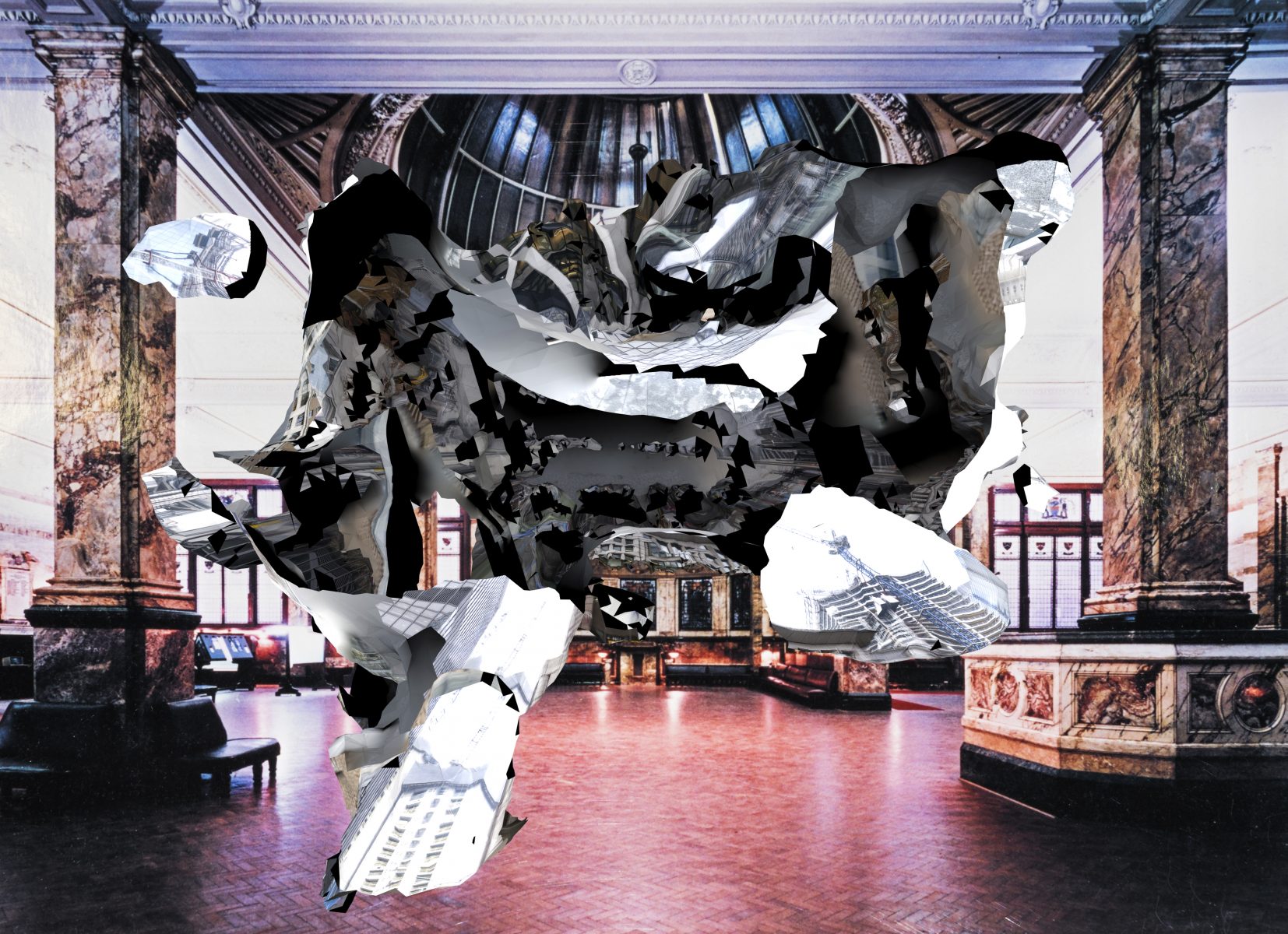Ivar Veermäe. Eternal Interests

The demolition of the Baltic Exchange in London in 1993 has resonated both in the art world and in the media. Resonates still, because most of what is left of the building is awaiting its fate in Estonia. The story of the Baltic Exchange is also the starting point of Ivar Veermäe´s exhibition. This – visually created – generalisation is a story of an eternal circle of interests, which develop, collide and fade away.
Ivar Veermäe’s exhibition “Eternal Interests” at the Art Hall Gallery from Friday, October 26th until December 2nd.
The events that form the basis for the exhibition and the generalisations based thereon are explained by the artist as follows:
“Eternal Interest is a story comprised of various connections, fragments of information and materials, which is focused on the events related to Baltic Exchange building that was located in London. The building was completed in 1903 and destroyed by two Provisional IRA car bombs in 1992 and 1993. After the bombing attack, the plan was to add the Baltic Exchange façade and large hall to a new building structure. The building was dismantled and very thoroughly documented. In a dispute between real estate developers and the heritage conservation authorities, the former won and the pieces of the building were put on sale. A few years later two Estonians bought them. The gap left in the centre of London by the Baltic Exchange building is currently being filled by the iconic Gherkin (or Swiss Re building that no longer belongs to Swiss Re), which was designed by the office of English star architect Norman Foster. This (strange) story gives rise to various associations and questions that comprise the different parts of the exhibition.
Details of the Baltic Exchange building made of noble materials, juxtaposed with temporary and inexpensive OSB material; archival photos of the Baltic Exchange after the bomb blast, and photos of the building’s interior processed for this exhibition; phone conversations with the occupants of the Norman Foster building that are heard on the loudspeakers and lead nowhere. A video comprised of documentary footage next to the 3D animation of various renderings, starting with a Buckminster-Fuller-like dome, from which all retrofuturism (including Foster’s Gherkin) has essentially developed. And non-standard images based on photogrammetry. All this is intended to show the change of architecture’s role from ‘an institution preserved in stone’ to an object of speculative marketing. The title of the exhibition has been borrowed from a sentence that has characterised British politics (Lord Palmerston, Winston Churchill) through the ages: ‘We have no permanent enemies, and no permanent friends, only permanent interests’ “.
The art of Ivar Veermäe (born 1982, works in Berlin and Tallinn) evolves similarly to the thread of a networked world while keeping a sharp eye on the functioning of an uncontrollable whole. It documents individual parts of this whole; adds to and nuances the themes under examination; it uses existing images in different combinations; changes measurement scales and presentation blueprints; and confirms the inevitability of universal interconnectedness. The research about how large corporations process data begun a long time ago and formed the basis of the powerful video installation “The Centre of Doubt” (exhibited at the Riga Biennial in 2018). St Ghislain’s Clouds, exhibited at the Tallinn City Gallery in 2013, was one part of this.
Veermäe’s detective work makes abundant use of videos. Despite lacking material weight, it has little in common with conceptual art. Rather, his activities resemble a test of strength with a reality that is both total and difficult to interpret. Such a reality provides no alternatives for parallel existences, which the viewer senses acutely. The anxiety felt by visitors who dive into Veermäe’s installations could be caused by a premonition of a future where the individual initiates, intermediates or completes nothing. Or with a similar fear of venturing into the past, where pre-civilizational tribal cave drawings tell an eerie story of uniting with power rather than being an artistic statement.
The artist wishes to thank: Maido Juss, Mattias Veermets,Hannes Brunner, Mehis Rump, Margot Paali.


